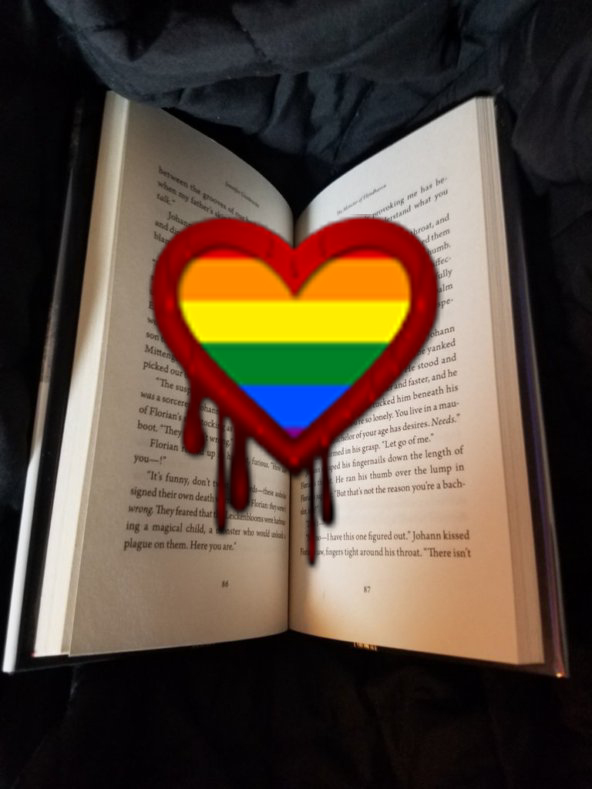
Pride Month Never Ends – The Return of the LGBTQ+ horror reads
More Videos
Published
4 years agoon
By
Audrey IIIJune has passed in a rainbow flag covered coffin and as corporate entities put away their LGBTQ+ allyship for another year, it’s worth remembering that there’s plenty of small ways you can keep supporting those queer horror works that may get recommended to you but are forgotten by the time Pride month ends. This year I decided to spend all of Pride month reading so I would have plenty of recs to keep up the barrage long after the rainbow flags come down. Perhaps the biggest bonus of my month spent working on my queer horror to be read list was all the great works I found in addition to the ones I intended to read. Here’s the first, but far from the last, of my LGBTQ+ horror book list. On with the barrage!
Vintage: A Ghost Story by Steve Berman
I can’t tell you how far I was into this book before I realized the main character was never named. But, when you’re a gay Goth teen who’s dropped out of high school and left home after your parents discovered your sexuality, is now living with your aunt while working at a vintage clothing shop, and have a crush on a ghost you met while walking alone on an empty strech of highway one night, what do names really matter?
Vintage may sound like something out of a Christopher Pike novel, but I think you’ll find it’s something far more. Think The Sixth Sense meets The Perks of Being a Wallflower. Our main character and his friends who populate the book are believably flawed, yet relatable, teenage personalities. That goes for the more ghostly presences as well. The prose is often much deeper and more intracrate than what you would expect from a YA novel. It’s not often I would deem something both scary and erotogenic, but the ghost sex in this one is centerinly something different, and often times frightening. As an added bonus, it mentions in the back of the book that one-fifth of the author’s royalties are donated to the Gay-Straight Alliance Network and the Trevor Project. This one isn’t to be missed.
Five out of five Cthulhu. 
A Dowry of Blood by S.T. Gibson
Oh, how I wanted to love this book! A queer retelling of Dracula from the point of view of his polycule of wives? Sounds great! Sign me up! Unfortunately, that wasn’t exactly what the book was about.
The book is told from the point of view of Constanta, a young woman whom a dark, mysterious stranger finds dying after a village raid. The stranger gives to her the gift, and the curse, of undying life. She and he-who-shall-not-be-named-Dracula spend hundreds of years together, sharing lovers of all sexes in their bed and in their stomachs. Constanta is happy, but isolated. That is until Count Noname meets another woman, Magdalena, whom Constanta conveniently falls in love with as well. This pattern repeats itself when the trio meet the young Russian man Alexei. Definitely-not-Dracula, meanwhile, grows ever more controlling and monstrous to his lovers until they realize it’s either going to have to be them, or him.
The speed at which whole centuries go by in the book makes everything seem a bit rushed. People fall in love instantly so it’s hard to tell what emotions are real and what are mere vampire glamor. The horror of having to kill to stay alive for centuries is mostly glossed over in favor of showing what a manipulative gaslighter Dracula can be and the events of the original novel are only given a single throwaway line in passing. That’s not to say vampires bonding over their continued abuse by their creator isn’t an interesting story, it’s just not the one I was expecting when I picked up the book. It was still an enjoyable read nonetheless.
Three out of five Cthulhu. 
This is Not a Horror Movie by Sara Dobie Bauer
Welcome to summer vacation in Florida! There’s the beach, lots of Stephen King books to read, the hot neighbor boy you’ve had a crush on for years, the annoying twin sister, the possibly haunted abandoned beach resort that’s eating people . . . Wait. What?
That’s just a small part of what you’re going to get in This is Not a Horror Movie, a fun rom-com slash horror slash coming of age, well, just plain slash story (if you know the other meaning of that word). Horror lover extraordinaire Emory is on his last summer vacation in Longboat Key, Florida with his family before he goes to college. Conner, the boy next door of his dreams, is going to be a huge part of that vacation, along with Vincent Price stalkers, missing homeless Vietnam vets, demonic cults, kidnappings, and no one’s first times but certainly their best times.
Sometimes a book can be just a fun romp, and that’s definitely what this book is. Most of the horror elements don’t even kick in until half-way through the book, but honestly, I didn’t even notice because I was having such a good time with the characters, who are both funny and endearing. Emory’s horror knowledge is used less as a meta reference like in Scream and more of something to bond over with Conner. Of course, that doesn’t mean it doesn’t come in handy when their lives are on the line. If you’re looking for a straight up horror story, like the title says, this probably isn’t what you’re looking for. If you’re looking for a good time and a fun summer read, then call me. I’ll happily loan you my copy of this book.
Four out of Five Cthulhu. 

Rolling in the Deep and Into the Drowning Deep by Mira Grant
A two for one special! You know what’s really scary? Mermaids. Or at least you’ll be thinking so after you read these two books by Mira Grant about a couple of documentary film crews on assignment to find mermaids below the bathypelagic zone (also known as midnight zone) in the deepest parts of the ocean of the Mariana Trench.
In what could be a prequel to the movie Underwater, or maybe Aquaman, it’s no spoiler to tell you the first of the crews of the research ship the Atargatis is met with an unimaginable tragedy. Rolling in the Deep is the novella that tells the frighting story of what happened to the Atargatis from the points of view of its crew, scientists, film crew, professional mermaid performers, and tv personalities. It’s as scientific and scary as anything by Michael Crichton, but it does leave you with some unanswered questions.
Into the Drowning Deep picks up right where Rolling in the Deep leaves off. Seven years later, another crew, much better prepared (supposedly), is sent back to the Mariana Trench to either prove or disprove what happened aboard the Atargatis. Into the Drowning Deep may be a bit long in the tooth when it comes to scientists arguing with each other, stereotypical big game hunters who are hired on as security, and evil corporations (going to need a “Does the Dolphin Die?” website now), but it does answer the bigger questions Rolling in the Deep leaves behind. And the biggest question of all that will keep you reading to the end, will they survive?
While these books are more in the traditional horror genre, they are filled with good representation of all sorts; hearing impaired characters, LGBTQ+ characters, neurodivergent characters, physically disabled characters, and many others. There’s a little something for everyone in other words.
Five out of Five for Rolling in the Deep, three out of Five for Into the Drowning Deep, giving an overall score of four out of Five Cthulhu. 
Related posts:
You may like
1 Comment
Leave a Reply
Cancel reply
Leave a Reply
This site uses Akismet to reduce spam. Learn how your comment data is processed.
Book Reviews
The Hotel: We’ll All Be There Soon.
Published
1 month agoon
March 17, 2025By
C M ReidDaisy Johnson’s, The Hotel is a collection of stories that tell the tale of a hotel built on cursed land. Originally written and recorded as a series for BBC Radio 4 in 2020, (you can find the recordings here https://www.bbc.co.uk/programmes/m000mrcg/episodes/player )
The fourteen-story collection was released in hardcover in 2021. Johnson’s prose is haunting, weaving together the stories of generations of families who have been tempted, forced, or serendipitously dumped at The Hotel. Most leave the message, “I’ll be there soon,” and many disappear from room 63.
- ‘The British literary heir to Stephen King’ Johanna Thomas-Corr, Sunday TimesA triumph of contemporary horror from the Booker Prize-shortlisted author, this collection of short stories will haunt you long after you turn the final pageA place of myths, rumours and secrets, The Hotel looms over the dark Fens, tall and grey in its Gothic splendour
- Built on cursed land, a history of violent death suffuses its very foundations –yet it has a magnetism that is impossible to ignore
- On entering The Hotel, different people react in different ways
Last update on 2025-03-17 / Affiliate links / Images from Amazon Product Advertising API
The Plot.
The Hotel tells the stories of the people who are drawn to The Hotel, or, more accurately, the ground the hotel is built on. The first story explains what we know about the hotel, its tendencies, moods, and … hobbies. We are then introduced to Mary Southgraves, ‘The Witch’, who comes to live with her husband on the land on which The Hotel will be built. The villagers in the pond drown her for predicting a sickness that takes the village children, (no this is not a spoiler she tells you she dies on the first page of her chapter.)
The proceeding chapters build upon this story. We meet the workers who are brought in to fill the pond to begin construction. A child of a guest in 1968 who meets another girl who may or may not actually be there. A maid who takes part in séances and Ouija board sessions. The stories progress through time into the present.
Highlights.
The haunting prose of The Hotel does the majority of the heavy lifting for this collection, which makes sense since it began as a podcast series. Johnson’s prose leans towards poetry, albeit more Poe than Keats.
The repetition of specific characters and family names throughout the different stories was intriguing, giving the stories links. These links trigger a sense of recognition for the reader. There is also a sense of anticipation, knowing what has happened to these families already, we wonder how much more they can withstand. The Hotel is like a curse following these families, but I think Johnson is commenting on lineage and the consequences of past actions. The sins of the father and all that.
- Fifteen highly original and darkly unsettling supernatural stories, performed by some of Britain’s finest actresses ‘This is what we know about The Hotel
- It is bigger on the inside than on the outside
- Do not go into Room 63
Last update on 2025-03-17 / Affiliate links / Images from Amazon Product Advertising API
Drawbacks.
These stories can get confusing at times and I think this is due to the briefness of the stories. It’s hard to keep track of a character that you have spent four pages with and remember them three stories later. I found myself having to stop and turn back to check if that person was who I thought they were. This pausing to turn back interrupts the reading experience. It pulls you out of the story and destroys the atmosphere that Johnson has worked to create.
The Final Take.
The Hotel was an interesting read. Johnson is a talented writer who has published a collection of linked stories that will keep the reader turning pages if only to find out the final fate of these families. That being said, it is obvious that the stories were initially written for a podcast. I’m not sure if it’s the way they are put together or… I don’t know, there’s just something ‘podcasty’ about them. As such I would recommend listening to the audio episodes (see the link above) over reading the book.
 (3 / 5)
(3 / 5)
On Halloween in 2016 Josh Malerman, author of Bird Box, released A House At The Bottom Of A Lake (gosh this is a hefty title!). Last week, I picked this slim book up off my library’s Adult Horror shelves, not knowing what to expect. What I got was a novella that should have been shelved in the teen lit section. Perhaps it is the rather weird underwater sex scene that precludes it from those shelves.
- From the New York Times bestselling author of Bird Box and Malorie comes a haunting tale of love and mystery, as the date of a lifetime becomes a maddening exploration of the depths of the heart
- “Malerman expertly conjures a fairy tale nostalgia of first love, and we follow along, all too willingly, ignoring the warning signs even as the fear takes hold
- ”—Lit Reactor The story begins: young lovers, anxious to connect, agree to a first date, thinking outside of the box
Last update on 2025-03-10 / Affiliate links / Images from Amazon Product Advertising API
The Plot.
When James asks Amelia out on a date during summer break, canoeing was the last thing that she expected. Borrowing his uncles canoe, James hopes he can show Amelia an exciting time, because he really likes this girl! The date starts well and the conversation, if stilted at times, is banter-ey and cool.
They head out on the first lake, but James has an idea that they might have a better time on the lake that joins to this one. It is quieter, no speed boats to show him up, they’ll be able to eat their picnic lunch in peace and quiet. When they arrive, though, they notice a tunnel, that may lead to a third lake. Eager to show Amelia that he is an exciting kind of guy, James heads through the tunnel.
Lo and behold, it is another lake! Albeit, a bit murky and deserted, but that’s alright. That is until they notice that beneath the bow of the boat is a tiled roof. Beneath that tiled roof is a whole house. What ensues is a summer of falling in love and exploring a sunken house that may not be as empty as they thought.
Highlights.
Malerman writing the internal monologue of an angsty seventeen-year-old on a first date is one of the most authentic things I’ve read for a long time. Even down to James worrying about revealing that his dad owns the hardware shop he works in. Scared that Amelia will think that is all he is going to do with his life.
The ending (which of course I cannot discuss here) was well done, although a little contrived and predictable. It felt as if it had been almost tacked on the end as an afterthought. Perhaps Malerman finished the story without the final chapter, but was encouraged to add that last bit to give readers some closure
- “A book that demands to be read in a single sitting, and through the cracks between one’s fingers
- There has never been a horror story quite like this
- Josh Malerman truly delivers
Last update on 2025-03-10 / Affiliate links / Images from Amazon Product Advertising API
Drawbacks.
Malerman is a good writer, we have seen this in the many novels he has released since Bird Box. A House At The Bottom Of A Lake did not meet the usual standard. There are many reasons I say this. The first is a lack of creativity in descriptive passages in this book. They all felt pretty drab and began to become repetitive by the end of the story. I don’t know how many, times Malerman compared the way that James and Amelia were moving under the water in their scuba suits as ‘Astronaut-like’ or ‘Astronaut-esque’ or ‘ Like he was walking without gravity’, but really can you find another comparison please because this one is all used up!
As I mentioned in the intro, this did feel like a YA novel. Not only because both of the main characters are seventeen, but the prose is a too simple to be engaging. A House A The Bottom Of A Lake might be marketed differently in Australia (where this humble reviewer lives), perhaps making it to the YA shelves in the US or UK, but this is definitely not adult horror.
The Final Take.
Josh Malerman is a favorite of mine. I tend to pick up his books, blurb unread, because I will generally enjoy what he is putting out there. The exception to this rule is A House At The Bottom Of A Lake (if I never have to type that title again I will be pleased!). It just didn’t hit the way his other novels have and I was disappointed.
 (2 / 5)
(2 / 5)
Imagine this. You’re home alone, waiting for your partner to return, when you hear a knock on your door. You answer it to see a family of five, bundled up against the cold. The father, a kindly older gentleman, explains that he used to live in this house as a boy. And he would love to show it to his family.
Do not let them in.
The story
Released in June 2024, We Used To Live Here is author Marcus Kliewer’s debut novel. It tells the story of Eve, who just purchased a beautiful house with her partner, Charlie. Their plan is to flip the house and sell it.
One night, while waiting for Charlie to come home, Eve is surprised by a knock at the door. It’s a man named Thomas Faust and his family.
Thomas explains that he grew up in the house and hasn’t been in the area in years. Would Eve let them in so that he can show the home to his children?
Against her better judgment, Eve lets them in. She regrets this almost at once when Thomas’s daughter vanishes somewhere into the house.
What worked
I always appreciate a book that allows you to play along with the mystery. And this book does that better than just about any other I’ve seen.
Pay close attention to the chapters, to the words that aren’t there. To everything about this novel.
This is mostly down to Kliewer. This is ultimately his work of art. But the production value is also fantastic. I don’t want to ruin the multiple mysteries, so I’ll just say this. There are clues in this book that require some specific artistic choices in the page layouts in this book. And I loved that.
If you’d like to experience another horror book review, check out this one.
We Used To Live Here is also the kind of story that makes you question everything right along with the main character, Eve. Eve is a great main character. But she might be an unreliable narrator. She might be experiencing every single horror described, exactly as it’s described. Or, she might be having a psychotic breakdown. Through most of the book, we can’t be sure. And that is so much fun.
Finally, the weather plays a large part in this story. There are several stories in which the weather or the land itself could be considered a character. Even an antagonist. This is certainly one. The winter storm is the thing that traps the family in the house with Eve. It also makes escaping the home difficult. Reading this book during the winter was especially impactful. Most of us know what it feels like to be shut in by a storm. I’ve personally lived through some of those storms that are just referred to by their year, as though they were impactful enough to claim the whole 365 days for themself. And that was with people I liked. Imagine what it would feel like with strangers. It’s a staggering thought and one that we explore in depth in this book.
- Get Out meets Parasite in this eerily haunting debut and Reddit hit—soon to be a Netflix original movie starring Blake Lively—about two homeowners whose lives are turned upside down when the house’s previous residents unexpectedly visit
- As a young, queer couple who flip houses, Charlie and Eve can’t believe the killer deal they’ve just gotten on an old house in a picturesque neighborhood
- As they’re working in the house one day, there’s a knock on the door
Last update on 2025-03-08 / Affiliate links / Images from Amazon Product Advertising API
In the end, We Used To Live Here is a fantastic book. It’s the sort of story that sneaks into your brain and puts down roots. And if this is just the first book we’re getting from Kliewer, I can’t wait to see what else he comes up with.
 (5 / 5)
(5 / 5)


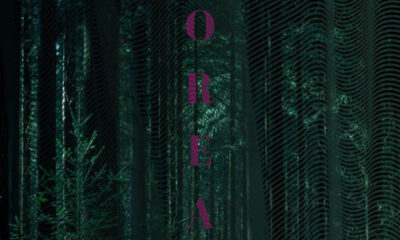



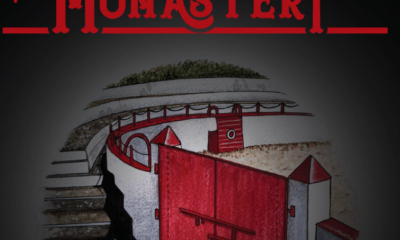



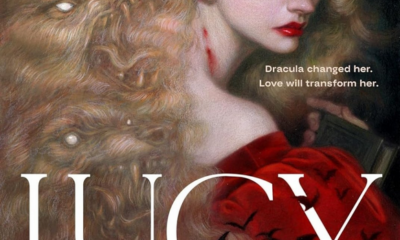

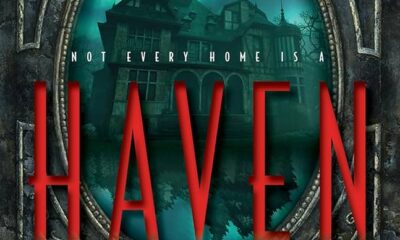

Ashley Slices
July 7, 2021 at 6:46 pm
Some awesome cool stuff to look forward to. Killer mermaids? Yes please